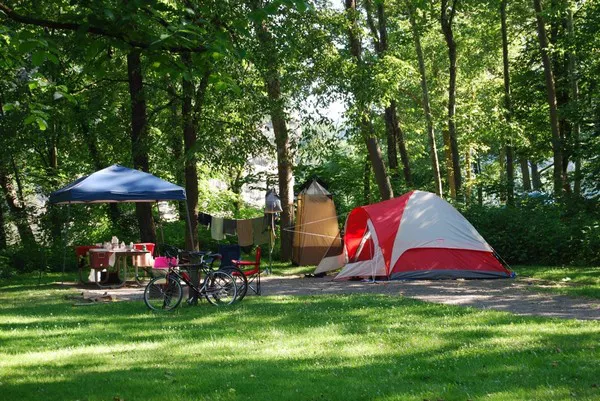Camping is a cherished outdoor activity that brings us closer to nature, but it also presents challenges when it comes to storing food safely and effectively. Proper food storage is crucial to prevent attracting wildlife, maintain freshness, and ensure meals are enjoyable throughout the trip. Choosing the best place to store food while camping requires consideration of several factors, including safety, convenience, and environmental impact. Let’s explore the various options and best practices for storing food while camping to enhance your outdoor experience.
Understanding the Risks
Before delving into where to store food, it’s essential to grasp the risks associated with improper food storage while camping. The primary concern is wildlife encounters. Animals such as bears, raccoons, squirrels, and even birds are attracted to food odors and can become persistent and potentially dangerous pests if they associate campsites with easy meals. Moreover, food that is not stored securely can spoil quickly due to exposure to heat, moisture, or pests, leading to foodborne illnesses or wastage.
Options for Food Storage
1. Bear-Proof Containers: In areas with bear populations, using bear-proof containers is mandatory and highly recommended. These containers are specially designed to be airtight and sturdy, capable of withstanding the strength and persistence of bears. They come in various sizes to accommodate different amounts of food and can be rented or purchased from outdoor retailers.
2. Camping Coolers: For shorter trips or when car camping, coolers can be a convenient option. They keep perishable items chilled and protect them from wildlife. It’s crucial to use coolers with tight-fitting lids and secure them to prevent animals from accessing the contents. Ensure to replenish ice regularly to maintain proper temperatures.
3. Hanging Food Bags: When in bear country without access to bear-proof containers, hanging food bags between trees is a traditional method of food storage. Use a durable rope and bear-resistant bags to hoist food at least 10 feet off the ground and 4 feet away from tree trunks and branches. This technique requires practice to master but is effective against ground-dwelling wildlife.
4. Vehicle Storage: If you’re car camping or have access to a vehicle at your campsite, storing food inside the vehicle’s trunk or interior (out of sight) is a viable option. Keep windows and doors securely closed to prevent animals from gaining access. However, note that this method may not be suitable in areas with extremely hot temperatures, as it can affect perishable items.
5. Campsite Lockers or Storage Boxes: Some established campsites provide lockers or storage boxes specifically for food and scented items. Utilize these resources if available, as they are designed to deter wildlife and promote proper food storage practices.
Best Practices for Food Storage
Regardless of the storage method chosen, following these best practices will help ensure food remains safe and secure throughout your camping trip:
- Minimize Odors: Keep food as odor-free as possible by double-bagging it in airtight containers or resealable bags.
- Separate Food and Toiletries: Store food and scented items (like toothpaste, lotions, and soap) separately to reduce attractants for wildlife.
- Clean Up Immediately: Dispose of food scraps and packaging promptly in designated trash containers or by packing them out.
- Regularly Inspect Storage: Check your food storage setup periodically for signs of tampering or damage, especially in bear country.
- Educate Yourself: Familiarize yourself with local wildlife and campground regulations regarding food storage to ensure compliance and safety.
Minimize Open-Air Exposure
Limit exposure of food to open air and sunlight, which can accelerate spoilage. Keep food containers closed when not in use and store them in shaded, cool areas. Use mesh food covers or netting to protect food from insects and airborne debris during meal preparation and serving.
Practice Proper Waste Management
Dispose of food waste responsibly to minimize environmental impact and prevent attracting wildlife. Pack biodegradable trash bags to collect food scraps and dispose of them in designated waste receptacles or by following Leave No Trace principles. Store food scraps securely to prevent animals from accessing them.
Follow Hygiene Practices
Maintain good hygiene practices while handling and storing food during camping trips. Wash hands thoroughly with soap and water before and after food preparation, especially when handling raw meats. Use antibacterial wipes or hand sanitizer if water is scarce.
Plan Meals Wisely
Plan meals that require minimal cooking and preparation to reduce food safety risks. Opt for shelf-stable foods like canned goods, dried fruits, nuts, and jerky that do not require refrigeration. Incorporate perishable items like fresh fruits and vegetables into early meals to ensure they are consumed before they spoil.
Conclusion
Choosing the best place to store food while camping requires careful consideration of wildlife risks, environmental impact, and practicality. By following recommended practices and using appropriate storage methods, campers can enjoy their outdoor experience safely and responsibly. Remember, the goal is not only to protect your food but also to respect the natural environment and wildlife that make camping such a rewarding adventure.

